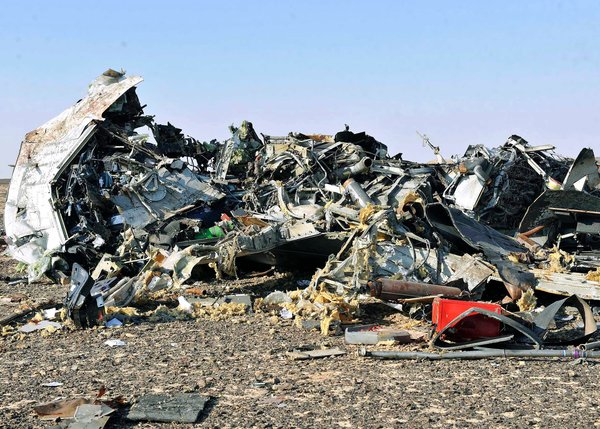A Russian charter flight ferrying 224 passengers and crew to St. Petersburg from the Red Sea resort of Sharm el-Sheikh, Egypt, crashed soon after taking off early Saturday, killing everyone onboard, officials in Egypt and Russia said.
The plane, an 18-year-old Airbus A321-200, disappeared from radar screens about 25 minutes after it took off, according to official accounts. Hossam Kamal, the Egyptian transportation minister, denied that anything abnormal had happened before the plane disappeared. Earlier news reports in Egypt, citing officials, said the pilot had radioed that he was having technical difficulties and wanted to make an emergency landing.
“Communications between the pilot and the tower were very normal – no distress signals occurred,” Mr. Kamal said at a news conference broadcast nationally. The pilot did not request to change his route to make an emergency landing, he said, emphasizing that “all was normal; the plane disappeared suddenly off the radar without any prior warning.”
The Egyptian government sent military crews and 50 ambulances to the crash site in an area called Hasana, a mountainous region about 46 miles south of El-Arish, the main city in the part of the Sinai Peninsula where the crash occurred. The ambulances began taking the 129 bodies recovered to military helicopters, senior officials said. All 224 people onboard the plane died, the Russian Embassy in Cairo said in a brief statement on Twitter.
Hours after the crash, a branch of the Islamic State operating in Sinai claimed responsibility. There has been no indication that the branch has the kind of weapons needed to bring down a plane from a high altitude. The other possibility would be a bomb planted or carried onboard. There has been a violent insurgency in Sinai against the Egyptian government for several years.
Egyptian and Russian officials did not immediately confirm the cause of the crash. The plane had apparently been trying to land at the airport at El-Arish, in northern Sinai, when it crashed, spreading mangled wreckage over a wide area of desert.
Maxim Sokolov, the Russian transportation minister, issued a statement rejecting reports that the plane had been the target of a terrorist attack.
This information cannot be considered credible,” Mr. Sokolov said. “We are in a close contact with our Egyptian colleagues, with the aviation authorities of this country. At the moment, they have no information that would confirm such fabrications.”
Air France and Lufthansa said Saturday that they would avoid flying over the Sinai Peninsula as a precaution until further notice. Lufthansa said this would involve rerouting flights to six destinations.
The plane was flying at 31,000 feet when it suddenly began to descend. The general range of the shoulder-fired missiles, commonly known as Manpads, that have been used against Egyptian military helicopters in the region is much lower, around 20,000 feet.
Russian officials emphasized that determining the cause of the crash would require a technical analysis of the flight recorders and other work. Investigators from both Russia and France will assist.
News reports in Egypt quoted the first security officials who reached the site as saying that the plane had broken in two and that many of the passengers were still strapped into their seats.
Sherif Ismail, the Egyptian prime minister, said at a news conference that the flight recorder had been recovered, along with the bodies of 129 victims. Debris from the crash was spread over an area of at least four miles, he said, and the security services continued to comb it.
Television footage showed ambulances backing up to a brown military transport helicopter and wrapped corpses being put on board.
An Egyptian government statement said the plane had been carrying 217 passengers, including 17 children, and seven crew members. Everyone onboard was Russian, most from the St. Petersburg region, except for three passengers from Ukraine and one from Belarus.

